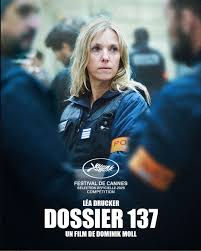Peeping Tom
- Nicolò Roncone
- 30 mag
- Tempo di lettura: 3 min
Aggiornamento: 12 giu

Before Blow-Up by M. Antonioni (1966), before The Conversation by F. Ford Coppola (1974), at the beginning of a certain narrative about the relationship between man and machine, there was Michael Powell, one of the greatest (and unfortunately largely unknown) filmmakers of post-war British cinema, alongside Alfred Hitchcock. Powell contributed to the collective shock of audiences through the cinematic art of thrillers, horror, and murder on the big screen. Peeping Tom (1960) is precisely one of these essential pieces, the sickening tale of a traumatised man named Mark Lewis (played by Carl Boehm) and his perspective on the world, filtered through a camera, an instrument both traumatizing and exorcizing from Mark’s childhood, now fueling an uncontrollable paraphilia for female terror and the consequent death by his hand. Seeing and re-seeing is at the core of Mark’s worldview; he is a man of cinema, of spectacle, of art.
Through his beloved camera, he has become a pornographer of the same terror he once experienced, now driven by a sadistic attraction to replicate it on beautiful female subjects: aspiring actresses, models, and prostitutes. The son of his father’s voyeurism, Mark lives his life in the constant presence of the female figure, orphaned by a mother and victimised by his traumatic father. He seeks to construct and give concrete form to his paraphilia through the desired and carefully crafted editing of suffering, screams, and the terror of his victims, a sort of testament built to be a magnum opus of homicidal fetishism and the snuff genre (long before it was publicly discussed as an art form).
His psyche was likely doomed from childhood, his conception of trauma distorted by the fear, unease, and psychological torture inflicted by his father, among beams of light, cameras, and induced hysterical cries. Yet, this does not make him any less deserving of salvation, perhaps he has even found someone capable of containing him: his unfortunate neighbour Helen Stephens (played by a young Anna Massey, a renowned British stage actress). Helen, hopeful of having found a kind man in her life, becomes entangled in Mark’s complex psychological web. Along with her blind mother, she unwittingly becomes a spectator to his sick, expiatory, and sadomasochistic journey. Mark promises never to harm Helen or her mother, perhaps the only two people he has truly grown attached to, in memory of his deceased mother. Mark’s fate is sealed, built by his own hands in every detail, from the most sadistic to the most unexpected, such as meeting Helen and discovering her mother. Yet, nothing can save him from his tragic destiny, carefully crafted to avenge his victims upon himself.
Powell does not merely create one of the greatest cult films of British horror, paying tribute to his suspenseful colleague Alfred Hitchcock. He turns cinema itself and the film itself into a direct vehicle for its message, as if the entire story were Mark’s long-sought-after snuff product, projected onto the audience in theatres. Audiovisual art thus becomes the medium that constantly violates life, intimacy, and the final moments of men and women through the gaze provided by the camera. Characters are created to have a beginning and an end, often tragic, before an audience. Perhaps we are the spectators of an immense paraphilic art form called Cinema, in which our instrument of harm becomes pleasure and passion: the gaze of the camera.
by Nicolò Roncone




Commenti